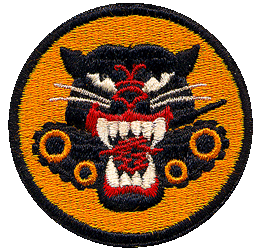 Thomas B. Anderson
Thomas B. Anderson
Biography: Thomas Brown Anderson was born on May 30, 1916, in Stanford, Kentucky. He was the son of Harry Anderson and Hallie Brown Anderson and attended local schools through the 12th grade. Thomas’ father died when he was only four and his mother worked as a social worker, helping families in the very rural areas of Kentucky.
After high school, Thomas continued his education at Berea College, in Kentucky, but finished his degree at Transylvania University in Lexington, graduating in 1935. He found work at the Central Institute for the Deaf, which was located in St. Louis, Missouri. While there, he met Anita Pauline Crosby, who was also working at the school. She was the daughter of Leo Crosby and Laura Lange and was born in Delavan, Wisconsin.
Service Time: Thomas entered the service and was initially assigned to the 28th Infantry Division but was chosen for officer’s training. After graduation, he was assigned to A Company of the 634th Tank Destroyer Battalion. He married Anita while on leave on December 14, 1941. Once he was back with the unit, they shipped out from the New York Port on December 29th, 1943, and arrived in England on January 10, 1944. Along the way, the Company A Commander died and Thomas was placed in charge.


The 634th landed on Utah Beach in Normandy, France, on June 30th equipped with M10s. They were committed to battle on July 10th near Carentan and participated in the Cobra breakout in late July. On July 10th and 11th, while in the area of Tribehou, Normandy, Captain Anderson went into enemy territory and identified hazardous terrain and after briefing his men, led them to repulse an enemy attack. For these actions he was awarded the Silver Star.
Their widely separated elements helped capture Mayenne and defeat the Mortain counteroffensive in early August. The 634th then raced east to Mons, Belgium, and supported operations against the Siegfried Line and the capture of Aachen, Germany, in October. It was during this action that Captain Anderson was recognized and he was awarded the Bronze Star for meritorious achievement.
The unit then fought in the Hürtgen Forest in November and moved to Belgium in December, only to race south to the Ardennes in late December. They crossed the Roer River on February 25th and pushed to the Rhine River at Bonn by March 9th. The 634th crossed the river at Remagen on March 15th and supported the envelopment of the Ruhr Pocket.
Sometime in April, or possibly early May, Thomas was notified that his mother was dying of cancer and he was shipped home to be with her. He left the service at the rank of Captain but remained in the Army Reserves, finally retiring in the late 1950’s at the rank of Major. The 634th received credit for the campaigns of Normandy, Northern France, Rhineland, Ardennes-Alsace and Central Europe. Thomas was also authorized to wear the Belgian Fourragere due to the unit receiving the award for actions from September 3rd to 5th, 1944 and December 28th to 30th, of that same year.
 After returning to the U.S., his mother did pass away in September of 1945. Thomas and Anita had two children, Alice, born in 1947, and Thomas (Tom), in 1950. Thomas went on to receive his Masters Degree and then a PhD in Speech Pathology, at Ohio State University. The family moved to Oxford, Ohio, where he worked for Miami University and was the Head and Chairman of the Speech and Hearing Clinic as well as the President of the Ohio Audiologist Group.
After returning to the U.S., his mother did pass away in September of 1945. Thomas and Anita had two children, Alice, born in 1947, and Thomas (Tom), in 1950. Thomas went on to receive his Masters Degree and then a PhD in Speech Pathology, at Ohio State University. The family moved to Oxford, Ohio, where he worked for Miami University and was the Head and Chairman of the Speech and Hearing Clinic as well as the President of the Ohio Audiologist Group.
In his spare time, he enjoyed fishing, gardening, woodworking and specifically making furniture. He passed away on October 4, 1978, and was buried in the Oxford Cemetery, in Oxford, Ohio. I want to thank Thomas’ son, Tom, for the information and photos for this tribute.
One funny story that Thomas shared with his son was when he and others from the unit came upon a small town that had been completely destroyed by artillery fire. The only thing still standing was one half of a house with its inner staircase completely exposed. The men could see that at the top of the staircase was a bathroom and toilet. It had been a long time since any of the men had been able to use a real toilet and they weren’t going to let this opportunity pass them by. After making multiple trips to the tank destroyer for water to operate the toilet, they were finally ready to test it. As soon as one of the men sat down, German artillery began to hit the area and within a moment, that same man came head-first down the steps with his pants still at his ankles.
